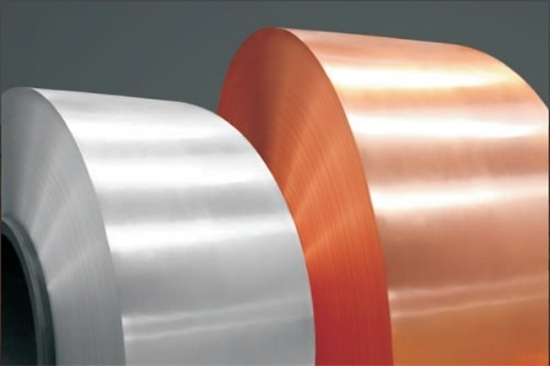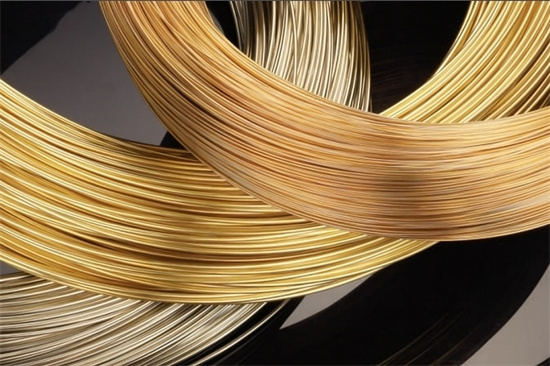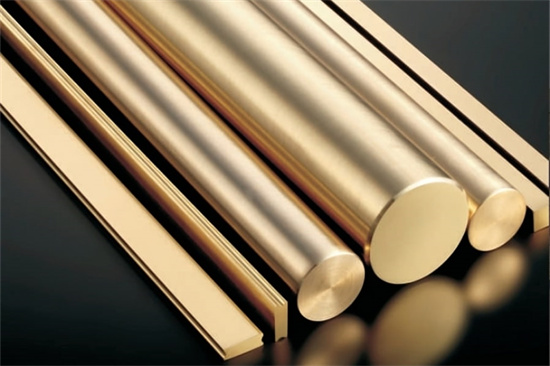


CuZn40: The Brass Alloy Offering Top-Level Durability
Low MOQ
Provide low minimum order quantity to meet different needs.
OEM & ODM
Provide customized products and design services to meet unique customer needs.
Adequate Stock
Ensure fast order processing and provide reliable and efficient service.
Customer Satisfaction
Provide high quality products with customer satisfaction at the core.
share this article
Table of Contents
In the world of engineering and manufacturing, choosing the right material is crucial for ensuring product performance and long-term durability. One such material that stands out for its versatility, strength, and corrosion resistance is CuZn40, a brass alloy that blends copper (Cu) and zinc (Zn) to create a reliable and widely used solution for various industrial applications.
If you’re in industries like plumbing, automotive, or electronics, chances are you’ve come across CuZn40. But what makes this alloy so special? What are its key properties, and how does it compare to other brass alloys? In this comprehensive guide, we’ll explore the composition, mechanical properties, applications, pricing, and more. By the end, you’ll have a deep understanding of CuZn40 and why it’s the go-to choice for manufacturers worldwide.
Overview
CuZn40, also known as CW509L or C28000 in various international standards, is a brass alloy composed of 60% copper (Cu) and 40% zinc (Zn). This combination gives CuZn40 a unique balance of strength, ductility, and corrosion resistance, making it suitable for a wide range of applications from structural components to decorative fittings.
Key Features :
- High Strength: The higher zinc content provides additional strength while maintaining good workability.
- Corrosion Resistance: CuZn40 offers excellent resistance to corrosion, especially in non-aggressive environments, which makes it ideal for outdoor applications.
- Cost-Effective: Compared to other copper alloys, CuZn40 is more affordable due to the higher percentage of zinc, which is cheaper than copper.
- Good Machinability: CuZn40 can be easily machined, stamped, and fabricated, making it a versatile choice for mass production.
- Aesthetic Appeal: With its bright, gold-like appearance, CuZn40 is often used in decorative and architectural applications.
Composition and Properties
To truly understand CuZn40, it’s essential to break down its chemical composition and look at its mechanical and physical properties. This section will help you see why CuZn40 is such a well-rounded material for various applications.
Chemical Composition
| Element | Percentage (%) |
|---|---|
| Copper (Cu) | 59 – 61 |
| Zinc (Zn) | 39 – 41 |
| Lead (Pb) | ≤ 0.05 |
| Iron (Fe) | ≤ 0.10 |
| Other elements | Trace amounts |
The high zinc content in CuZn40 gives it improved strength compared to other brasses with lower zinc percentages. The trace amounts of lead and iron contribute to enhanced machinability and formability during the manufacturing process.
Mechanical and Physical Properties
| Property | Value |
|---|---|
| Tensile Strength | 350 – 550 MPa |
| Yield Strength | 150 – 300 MPa |
| Elongation | 20 – 40% |
| Density | 8.47 g/cm³ |
| Hardness | 80 – 120 HB |
| Thermal Conductivity | 120 W/m·K |
| Electrical Conductivity | 28% IACS |
| Melting Point | 900 – 940°C |
Notable Characteristics :
- Strength and Toughness:it offers a good balance of tensile strength and ductility, allowing it to withstand mechanical stress without breaking or deforming.
- Corrosion Resistance: While not as corrosion-resistant as pure copper, it performs well in non-aggressive environments, such as freshwater and mildly acidic atmospheres.
- Workability: CuZn40 can be easily formed, welded, and machined, making it ideal for manufacturing complex components with tight tolerances.
Applications
CuZn40’s unique properties make it suitable for a wide range of industrial and commercial applications. Let’s take a closer look at the industries and specific uses where CuZn40 shines.
Common Applications
| Industry | Typical Applications |
|---|---|
| Plumbing | Fittings, valves, taps, and couplings |
| Automotive | Radiator components, gaskets, and decorative trims |
| Electrical | Connectors, terminals, and electrical pins |
| Construction | Architectural hardware, handrails, and door handles |
| Marine | Non-critical components, decorative fixtures |
| Aerospace | Non-load-bearing parts, hydraulic fittings |
| HVAC | Heat exchangers, condenser tubes, and evaporators |
Why CuZn40 is Ideal for These Applications:
- Plumbing: CuZn40’s corrosion resistance and formability make it a top choice for manufacturing plumbing fittings, ensuring long-lasting durability in both residential and commercial systems.
- Automotive: The alloy’s strength and aesthetic appeal make it perfect for decorative trims, while its thermal conductivity is ideal for radiator components.
- Electrical: With good electrical conductivity, it is often used in electrical connectors and terminals, ensuring reliable performance in circuits.
- Construction: CuZn40’s golden hue and corrosion resistance make it a popular material for architectural hardware and decorative elements.
- Marine: Although not used in critical marine applications, it finds use in non-load-bearing and decorative marine components due to its resistance to tarnishing and corrosion.
Specifications, Sizes, and Standards
When sourcing CuZn40 for your projects, it’s important to understand the available specifications, sizes, and standards it adheres to. This ensures you select the right form and grade based on your project’s requirements.
Common Standards and Specifications
| Specification | Description |
|---|---|
| ASTM B36 | Standard for Copper Alloy Plates, Sheets, and Strips |
| EN 1652 | European standard for copper and copper alloy strips |
| DIN 17660 | German standard for wrought copper alloys |
| JIS H3250 | Japanese standard for brass plates and strips |
Available Sizes and Forms
| Form | Size Range |
|---|---|
| Rods | Diameter: 5 mm to 150 mm |
| Sheets/Plates | Thickness: 0.5 mm to 50 mm |
| Tubes | Diameter: 6 mm to 100 mm |
| Wires | Diameter: 0.5 mm to 10 mm |
Depending on the supplier, you can often request custom sizes to suit specific project requirements, minimizing material waste and optimizing production efficiency.
Suppliers and Pricing
Pricing for CuZn40 can vary depending on factors such as supplier location, order size, and current metal market conditions. Below is a table listing some reliable suppliers and the typical pricing for CuZn40.
Typical Suppliers and Pricing
| Supplier | Location | Price Range (per kg) | Lead Time |
|---|---|---|---|
| ThyssenKrupp Materials | Germany | $9 – $20 | 1-3 weeks |
| Aviva Metals | USA | $10 – $22 | 2-4 weeks |
| Shanghai Metal Corp | China | $8 – $18 | 3-5 weeks |
| Smiths Metal Centres | UK | £8 – £18 | 1-2 weeks |
Factors Influencing CuZn40 Pricing
- Market Conditions: The price of copper and zinc fluctuates based on global supply and demand, directly affecting CuZn40’s cost.
- Order Quantity: Larger orders often come with bulk discounts, while smaller quantities may carry a higher price per kilogram.
- Form and Size: Sheets and custom-cut components may be more expensive than standard rods or bars due to additional processing fees.
- Shipping and Location: International shipping fees and import/export taxes can significantly impact the final price when sourcing from overseas suppliers.
Advantages and Limitations
While it is a versatile and high-performing alloy, it’s essential to understand both its advantages and limitations before selecting it for your project. Below we outline the pros and cons of this material.
Advantages and Limitations
| Advantages | Limitations |
|---|---|
| High strength and toughness: It offers excellent mechanical properties, making it suitable for industrial applications. | Limited corrosion resistance: While it is corrosion-resistant in non-aggressive environments, it’s not ideal for highly corrosive settings like marine or chemical industries. |
| Cost-effective: CuZn40’s higher zinc content makes it more affordable compared to other copper alloys. | Lower electrical conductivity: CuZn40’s electrical conductivity is lower than that of pure copper, limiting its use in high-performance electrical applications. |
| Good machinability: It can be easily machined, stamped, and formed, making it a versatile option for mass production. | Not lead-free: Trace amounts of lead may restrict its use in drinking water systems or other applications where lead-free materials are required. |
| Aesthetic appeal: CuZn40’s bright, gold-like appearance makes it ideal for decorative and architectural applications. | Not suitable for marine use: It may tarnish or degrade in highly corrosive marine environments, limiting its use in critical marine components. |
Comparing CuZn40 with Other Brass Alloys
Choosing the right brass alloy can be tricky, especially when there are numerous options available. How does CuZn40 compare to other popular brass alloys in terms of performance, cost, and applications?
CuZn40 Compared to Other Brass Alloys
| Property | CuZn40 | CuZn39Pb3 | CuZn37 | CuZn36Pb2 |
|---|---|---|---|---|
| Tensile Strength | 350 – 550 MPa | 300 – 450 MPa | 320 – 500 MPa | 280 – 430 MPa |
| Machinability | Good | Excellent | Good | Very Good |
| Corrosion Resistance | Good | Moderate | Excellent | Moderate |
| Electrical Conductivity | 28% IACS | 25% IACS | 30% IACS | 26% IACS |
| Formability | Very Good | Good | Very Good | Excellent |
Key Comparisons:
- CuZn40 vs. CuZn39Pb3: CuZn39Pb3 offers superior machinability due to its higher lead content, but CuZn40 has better corrosion resistance, making it more suitable for outdoor applications.
- CuZn40 vs. CuZn37: CuZn37 has slightly better corrosion resistance and formability, but CuZn40 offers a higher strength-to-cost ratio, making it a more cost-effective solution for certain applications.
- CuZn40 vs. CuZn36Pb2: CuZn36Pb2 excels in machinability and formability, while CuZn40 offers better strength and toughness, making it more suitable for load-bearing components.
Frequently Asked Questions (FAQ)
To help you make a more informed decision about CuZn40, here are some of the most frequently asked questions regarding its properties, performance, and applications.
| Question | Answer |
|---|---|
| What is it used for? | It is commonly used in plumbing fittings, automotive components, architectural hardware, and electrical connectors. |
| Is it suitable for marine applications? | It is not recommended for critical marine applications due to its limited corrosion resistance in highly aggressive environments. |
| What is the tensile strength of CuZn40? | It has a tensile strength ranging from 350 to 550 MPa, depending on the form and processing method. |
| Is it easy to machine? | Yes, it offers good machinability, making it ideal for manufacturing precision parts and mass-produced components. |
| Can it be used in electrical applications? | While it has moderate electrical conductivity, it is not as conductive as pure copper, so it’s typically used in low-voltage connectors. |
| How does it compare to other brass alloys? | It offers a good balance of strength, cost, and machinability, making it a versatile option for various industrial applications. |
Conclusion
It is a versatile and high-performance brass alloy that offers a unique blend of strength, machinability, and corrosion resistance. Whether you’re working in the plumbing, automotive, construction, or electrical industries, it provides a cost-effective solution that doesn’t sacrifice performance.
While it may not be suitable for highly corrosive environments like marine applications, it excels in non-aggressive settings and is a popular choice for decorative hardware, precision components, and architectural fittings. By understanding its composition, properties, and applications, you can confidently select CuZn40 for your next project, knowing that it will deliver the strength, durability, and workability you need.
Maybe you want to know more about our products, please contact us
Get Latest Price
About Met3DP
Product Category
HOT SALE
CONTACT US
Any questions? Send us message now! We’ll serve your request with a whole team after receiving your message.

Metal Powders for 3D Printing and Additive Manufacturing
COMPANY
PRODUCT
cONTACT INFO
- Qingdao City, Shandong, China
- [email protected]
- [email protected]
- +86 19116340731








